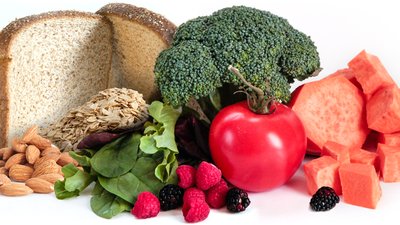Most fitness fanatics prioritize protein on their daily menu, with good reason. To build muscle like a pro, protein should be tops on your list. But while other nutrients play important roles, fiber is often an afterthought. And that could be a big mistake.
In fact, chances are you're not getting enough fiber. Research suggests that more than 90 percent of Americans aren't meeting their daily fiber requirement, which is 25 grams a day for women and 38 grams a day for men.[1] That's bad news for your physique transformation, not to mention overall health.
Beyond helping to keep you more regular than Norm from "Cheers," a high-fiber diet can aid in fat loss, improve digestive health, better your cholesterol numbers, and slash the risk of certain types of cancer. So it should be no big surprise that a 2014 American Journal of Clinical Nutrition study found that people with a higher fiber intake had a longer lifespan than those with a lower intake.[2] Plus, if you're eating a high-fiber diet, there's a good chance your daily menu is chockablock in the other nutrient-dense whole foods you need to reach your fitness goals.
When it comes to keeping you as lean as a racehorse, fiber exerts a powerful one-two punch on your pudge. First, fiber waylays hunger, so it helps prevent you from overeating those tempting cookies in the office break room. A diet with adequate amounts of grit also improves blood sugar control, which can go a long way in reducing fat storage.
But there's no need to choke down Metamucil to get your fill of fiber. We've put together a list of whole-food grub that'll surely help you become one of the few who are actually nailing their daily fiber quota. Let's go through them aisle-by-aisle in the supermarket.
Fiber-Packed Legumes
1. Lentils
Fiber Count: 15 Grams Per 1/4 Cup, Dry
If you want a surefire way to make sure you're meeting your fiber needs, work more of the humble lentil into your dietary repertoire. Your muscles will also appreciate an impressive 13 grams of plant-based protein in each serving. Another perk is that inexpensive dry lentils take only about 30 minutes to cook in a pot of simmering water, which is much quicker than dried beans. Green or brown lentils are higher in fiber than red (pink) ones.
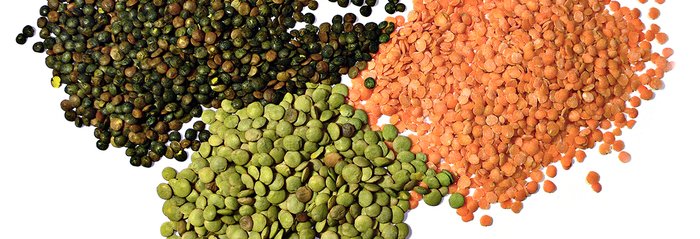
Sneak More In
Cook up a bunch of lentils and use them in soups, chili, and salads. You can quickly whip up a fiber-packed lunch for the work day by tossing together lentils with halved cherry tomatoes, diced bell pepper, baby spinach, feta cheese, and dressing. Lentils are also a good ingredient to use in veggie burgers when you want to give beef the night off. Also serve them as a side to salmon.
2. Kidney Beans
Fiber Count: 14 Grams Per 1 Cup, Canned
Though bodybuilders notoriously shun beans in favor of meat, think of kidney and other beans as the MVP of your pantry: They're inexpensive, convenient, overloaded with fiber and other vital nutrients, and are extremely versatile in the kitchen. A study published in the Journal of the American College of Nutrition found that people who ate beans regularly were 23 percent less likely to have a large waistline compared to people who avoided beans.[3]
Sneak More In
Kidney beans are an ideal way to bolster fiber numbers in your next batch of chili. Also mix them with other beans, chopped veggies, and a dressing for a quick salad that's overloaded with nutritional benefits.
3. Split Peas
Fiber Count: 13 Grams Per 1/4-Cup, Dry
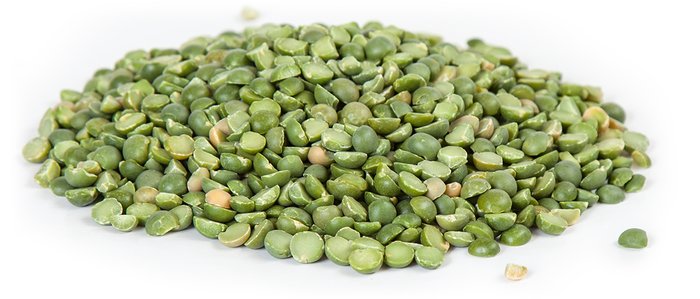
While split peas aren't often on our grocery lists, they should be if you want to start roughing it. You'll also reap the rewards of plenty of plant protein and folate, a B vitamin shown to help in the fight against hypertension.[4] Like lentils, yellow or green split peas have the advantage of a quicker cooking time than dry beans without the need for a presoak.
Sneak More In
The best way to work split peas into your diet is in soups and stews. Ham and split pea soup is a classic and is brimming with muscle-friendly protein. Also try making hummus using cooked yellow split peas. Simply make a puree of the peas and tahini, garlic, lemon juice, smoked paprika, and salt.
4. Chickpeas
Fiber Count: 11 Grams Per 1 Cup, Canned
Also called garbanzo beans, chickpeas have a slightly nutty flavor and a nutritional resumé that puts many other foods to shame. This includes laudable amounts of fiber, plant protein, iron, and vitamin B6, the latter of which is necessary for a healthy nervous system.
Sneak More In
It's easy to toss a handful of canned chickpeas onto your salads or to whip up your own hummus. For an addictive, crunchy, fiber-packed snack, pat a 14-ounce can of chickpeas dry with a clean paper towel. Remove any loose skins. Place in a bowl and toss with 1 tablespoon oil. Add 1 teaspoon cumin, 1/2 teaspoon dried thyme and 1/4 teaspoon salt, then toss to coat the chickpeas with the spice mixture.
Spread the chickpeas out on a rimmed baking sheet and bake at 400 degrees Fahrenheit until crisp and golden—about 40 minutes—stirring at least twice for even toasting. Let them cool to room temperature (they will crisp up further) and store them in airtight container for up to three days.
5. Black Beans
Fiber Count: 8.5 Grams Per 1/2 Cup, Canned
Beans, beans, they're good for your heart, the more you eat the more you… Well, you know how this amusing schoolyard rhyme ends. Regardless, black beans are another "musical fruit" you should be eating more of—if not for their payload of fiber, then for the same disease-fighting anthocyanin antioxidants found in dark berries like blueberries. When purchasing canned beans, look for brands such as Eden Organic that pack them in BPA-free cans. BPA is a hazardous chemical associated with fat gain and coronary woes.

Sneak More In
Soups, chili, tacos, and salads are easy ways to take in more of these dark delights. Try making a chili using black beans and then stuffing it into a baked sweet potato. Surprise—you can even sneak black beans into better-for-you brownie recipes. Simply place a 14-ounce can of black beans including its juices into a blender or food processor and puree. Then add the mash directly to your brownie mix, replacing about 75 percent of the fat a recipe or premade mix advises.
6. Edamame, Frozen And Shelled
Fiber Count: 8 Grams Per 1/2 Cup
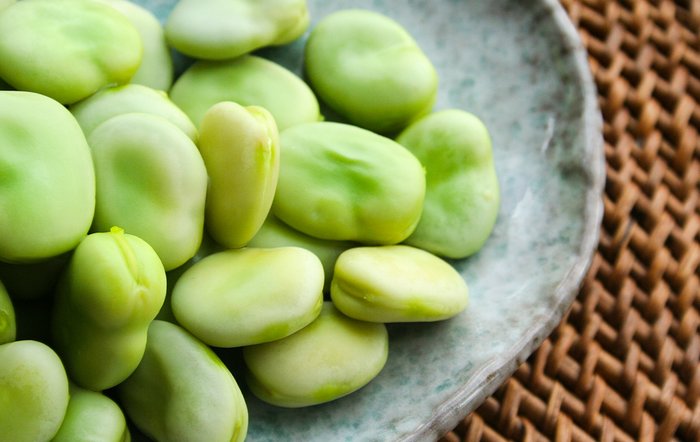
Edamame are green soybeans picked before fully ripened with a brilliant nutty flavor and crisp texture. You can find them in the freezer section of most grocery stores. They're a much, much less processed form of soy than what's found in many packaged foods. A mere 1/2 cup of the legumes also provides 8 grams of high-quality plant protein to help show your muscles some love. If you want to avoid genetically modified soy, opt for organic edamame.
Sneak More In
When a snack attack strikes, try preparing edamame according to package directions, then squirt on some fresh lemon juice and season with smoked salt. You can also swap out chickpeas for edamame when making hummus.
7. Refried Beans
Fiber Count: 7 Grams Per 1/2 Cup
When made with just mashed-up pinto beans, refried beans are a stealthy way to add more fiber to your meal plan. As with other beans, pinto beans are a good source of soluble fiber. The white coats at Wake Forest University School of Medicine (North Carolina) found that a higher intake of soluble fiber was particularly effective at reducing visceral fat, a type of fat located in your abdominal region that's not only unsightly but also significantly raises disease risk.[5] Be sure to avoid any brands of refried beans with added fats.
Sneak More In
Beyond quesadillas, tacos, burritos, and a dip for tortilla chips, try using refried beans as a general sandwich spread or in lieu of tomato sauce on pizza.
8. Lima Beans, Frozen
Fiber Count: 5 Grams Per 1/2 Cup, Cooked
Rich and buttery, lima beans are named for their native Peru's capital city. During the summer months, you may find them fresh in their pods at farmers markets. At other times, bags of frozen lima beans are a convenient way to get more fiber. This childhood favorite (we kid!) is also a good source of iron, blood-pressure-lowering potassium, and magnesium.
Sneak More In
To make a quick succotash, cook 1/2 cup chopped red bell pepper, 1/2 diced onion, and 2 minced garlic cloves over medium heat in a skillet for 2 minutes. Stir in 1 cup cooked lima beans, 1 cup corn kernels and 2 tablespoons white wine or vegetable stock. Remove from heat and mix with 2 tablespoons chopped fresh parsley, and salt and pepper to taste.
Fiber-Packed Grains
9. Barley, Hulled
Fiber Count: 8 Grams Per 1/4 Cup, Dry
For most people, their only exposure to barley is what's on tap at the local pub. That's a shame considering simmering up a pot of the chewy grain is a great way to get your fiber fix. It's important to understand that hulled barley is the whole-grain form of barley, with only the outermost hull removed.
On the flipside, the more common pearled barley is lower in fiber and less nutrient-rich, since the outer husk and bran layers have been removed. Hulled barley takes longer to cook, up to one hour, so consider making big batches at once. Extra cooked barley can be frozen for future use.
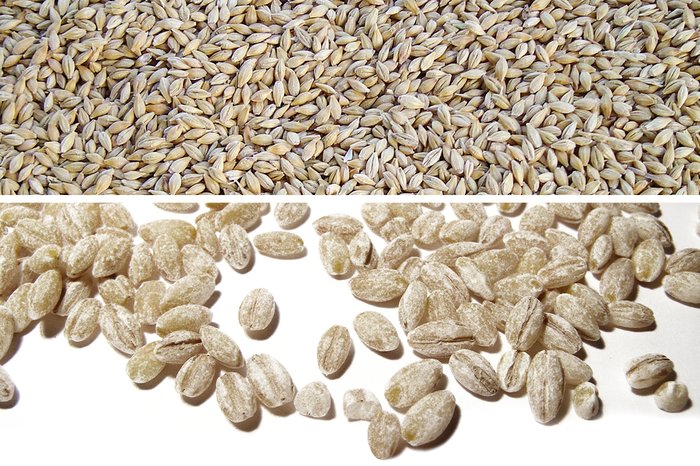
Sneak More In
For a lunch that packs a punch, stir together cooked hulled barley with chopped veggies like carrots, bell pepper, and parsley, cooked chicken, feta cheese, and lemon vinaigrette. Also try swapping barley for rice for a healthier take on fried rice.
10. Dark Rye Flour
Fiber Count: 7 Grams Per 1/4 Cup
Move over whole-wheat flour—there's a better option if you want to jack up your fiber numbers. Made by grinding up whole rye kernels into a fine powder, hearty rye flour is often overlooked in U.S. kitchens but commonly used in Scandinavian cooking for items like breads and crackers.
Beyond fiber, it harbors several important nutrients, including phosphorus, selenium, magnesium, and iron. Keep in mind that "light rye flour" is similar to white flour in that it has had a portion of its nutritional goodness stripped away.
Sneak More In
The robust flour can add new flavor nuances to homemade pancakes, waffles, breads, cookies, crackers, and even pizza crust.
11. Wheat Bran
Fiber Count: 6 Grams Per 1/4 Cup
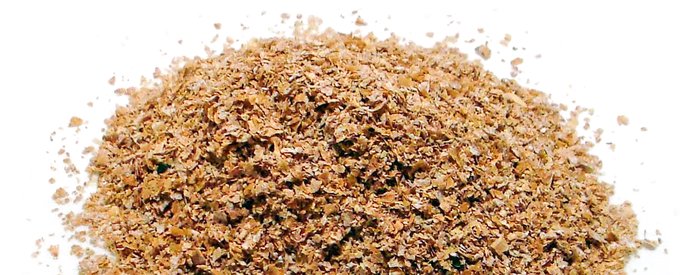
Grains are made up of three elements: endosperm, germ, and bran. It's the latter where most of the fiber is found. So when you isolate the bran of the wheat grain you end up with a flaky fiber star. It's also jam-packed with manganese, a mineral that plays an essential role in metabolism.
Sneak More In
It's easy to stir some inexpensive wheat bran into a pot of cooked oatmeal or into your favorite pancake batter. You can also blend some into protein shakes, homemade energy bars, and baked goods.
12. Spelt
Fiber Count: 5 Grams Per 1/4 Cup, Dry
An ancient relative of wheat, nutty-tasting spelt has a pleasant chewy texture and is a popular heirloom grain in Germany. Generally considered more nutritious than modern-day hybridized wheat, salubrious spelt is plush with fiber and an array of nutrients including magnesium.
Consider magnesium the renaissance man of minerals, as it's a key player in numerous bodily functions ranging from protein synthesis to blood-sugar control to bone building. Each serving of spelt will also bring about 6 grams of protein to the table. Though spelt contains gluten, some people who are wheat sensitive find it easier to digest.
Sneak More In
Spelt is a winning substitute for rice in burritos or try it in soups, stews, and veggie burgers.
13. Steel-Cut Oats
Fiber Count: 5 Grams Per 1/4 Cup, Dry
It's good to know that a breakfast staple for many fitness finatics is a top-notch fiber source. However, if you're simmering up mushy quick-cook oats, it's time to make the switch to the more hearty and creamy steel-cut version that's produced when the whole-oat grain is passed through steel blades cutting them into pellet-like pieces. Most people find steel-cut oatmeal to be more filling, which can help reduce midmorning vending-machine temptation.
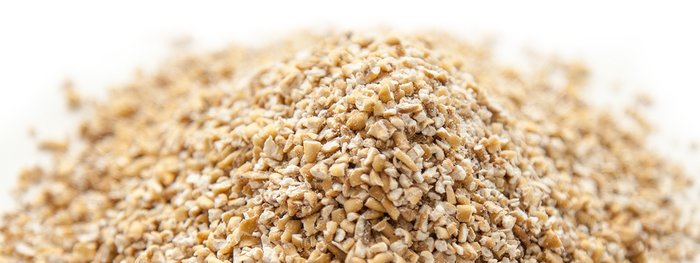
Sneak More In
No need to wait for a pot of steel-cut oats to slowly cook during a harried morning. To expedite the process, place 1 cup steel-cut oats, a pinch of salt, and 2-1/2 cups water in a medium-sized saucepan. Bring to a slight simmer, turn off heat, and let oats soak overnight covered. In the morning, stir in some milk or additional water and seasonings like cinnamon, and heat over medium-low until warmed through. Garnish with desired toppings.
14. Millet
Fiber Count: 4 Grams Per 1/4 Cup, Dry
While gluten-free millet is most often used in birdseed, this inexpensive whole grain isn't just for the birds. It actually contains more fat-fighting fiber than quinoa and is a source of numerous must-have nutrients such as magnesium, copper, and zinc. More great news: Research shows that the often-overlooked little yellow beads are a stellar source of age-avenging antioxidants.[6]
Sneak More In
Use cooked millet as a side dish like you would rice or quinoa. Or toss with cooked meat, vegetables, and a vinaigrette for a healthy lunch salad. To make a nutritionally charged breakfast porridge, simmer 1 cup millet in 3 cups water and stir every few minutes as the grains simmer for a creamier consistency. Add seasonings like cinnamon and toppings such as raspberries and chopped nuts.
15. Buckwheat Groats
Fiber Count: 4 Grams Per 1/4 Cup

Gleaned from an herb native to Eastern Europe and Asia, buckwheat is related to rhubarb and not wheat, so it's free of gluten. When whole buckwheat kernels are crushed into pyramid-shaped grains they're called groats. Reddish-brown "kasha" is merely buckwheat groats that have been roasted to intensify their flavor. Among the many nutritional highlights, buckwheat is a significant source of fiber, manganese, B vitamins, and magnesium.
Sneak More In
When cooked, buckwheat swells to several times its original size, so it works well to bulk up chili, soup, stew, risotto, burgers, meatloaf, and casseroles. For a crunchy salad topping, try toasting buckwheat groats in a heavy dry skillet over medium heat, stirring often, until darkened and fragrant, about 5 minutes.
Sprinkle over salads or even yogurt and oatmeal. Popular in Japan, quick-cooking nutty-tasting soba noodles are made with buckwheat flour and offer a healthy upgrade to refined white pasta.
16. Popcorn
Fiber Count: 4 Grams Per 4 Cups
We're talking about the plain, air-popped variety, not the calorie-bomb multiplex version. Ye olde popcorn is often forgotten in the dialogue of healthy snack options, but with good fiber numbers and just 130 calories in each 4-cup serving, you'd be hard-pressed to find many more snacks that are less hazardous to your waistline. If you're not popping your own, look for bagged versions with as short of an ingredient list as possible.
Sneak More In
Popcorn makes a stellar addition to trail mix for a healthy snack whether you're deskbound or lost in the woods. Try combining popcorn with some dried fruits, roasted nuts, and seeds.
Fiber-Packed Fruits
17. Dried Figs
Fiber Count: 15 Grams Per 1 Cup
While fresh figs aren't always easy to find at your local megamart and their sky-high prices can be truly unappetizing, dried figs are available year round for a stellar source of fiber. You can thank all those little seeds for providing a fiber bounty. As a bonus, you'll get a range of nutrients not found in other parched fruit, including calcium, magnesium, potassium, and vitamin K.
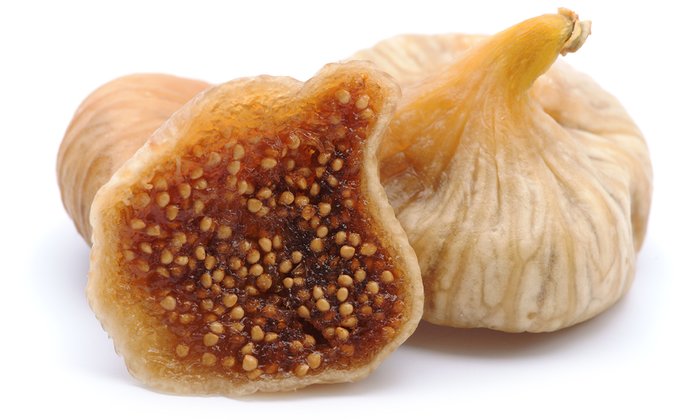
Sneak More In
Sliced figs are a great "what's that?" ingredient in sandwiches and salads. For your new favorite yogurt or oatmeal topping, in a medium-sized saucepan combine 1-1/4 cups brewed coffee, 20 dried mission figs (stems removed and quartered), 1/4 cup honey, 1 whole star anise, 1/4 teaspoon cinnamon, and 1 teaspoon orange zest. Bring to a boil, reduce heat, and simmer covered for 20 minutes.
With a slotted spoon, remove figs from the pan. Simmer liquid, uncovered, over medium-high heat until reduced and syrupy, 3-4 minutes. Combine figs and syrup; discard star anise.
18. Rasberries
Fiber Count: 8 Grams Per 1 Cup
When it comes to berries, these flushed gems are the fiber powerhouse. Each cup delivers twice the amount of fiber found in blueberries. Another perk is a healthy dose of vitamin C. A study in the European Journal of Nutrition discovered that individuals with low vitamin-C status had reduced exercise performance compared to those with better vitamin-C status.[7] Vitamin C is a potent antioxidant that can help reduce the oxidative stress associated with high-intensity workouts.
Sneak More In
Giving your diet a fiber boost is as easy as tossing raspberries onto your yogurt and oatmeal. Stash a bag of frozen raspberries in your freezer and use them to elevate your protein shakes. For a gussied-up salad dressing, try blending together olive oil, fresh raspberries, red wine vinegar, Dijon mustard, a garlic clove, and salt and pepper to taste.
19. Blackberries
Fiber Count: 8 Grams Per 1 Cup
As with their red counterparts, deliciously sweet blackberries are fiber superheroes. The dark delights are also chock-full of vitamin K. A 2014 study published in the Journal of Nutrition found that higher intakes of vitamin K were associated with a reduced risk of big-time killers such as heart disease and cancer.[8]
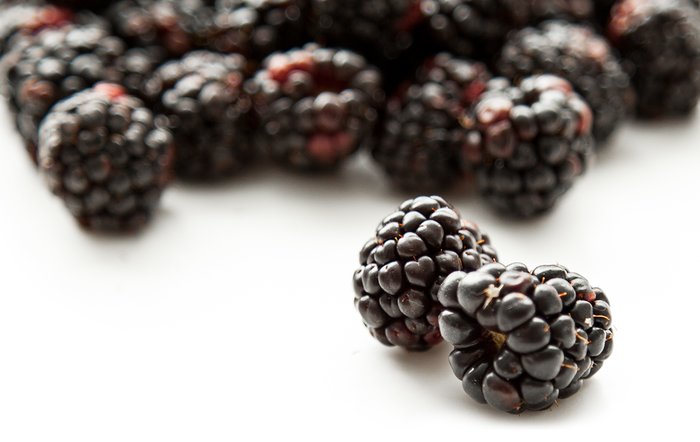
Sneak More In
Use blackberries in protein shakes, cottage cheese, oatmeal, yogurt, green and fruit salads, or piled atop a stack of pancakes.
20. Avocado
Fiber Count: 6.5 Grams Per 1/2 Avocado
When most people think of avocados, what comes to mind is their high amount of beneficial monounsaturated fats. Yet the creamy fruit (yes, it's a fruit!) is a great way to help nail your daily fiber quota. You'll reap the benefits of its nutrient bonanza including notable amounts of vitamin K, folate, potassium, and vitamin B-6.
Sneak More In
Beyond sandwiches, salads and, of course, guac, you can give your shakes a good shot of fiber by blending together 1/2 ripe avocado with milk of choice, protein powder, cocoa powder, cinnamon, and frozen banana.
21. Pears
Fiber Count: 6 Grams Per 1 Medium Fruit
Take a bite out of a juicy pear and you'll be one step closer to reaching your daily fiber requirement. In fact, pears contain about 30 percent more grit than apples. Just make sure that you eat them with their skin since that's where most of the dietary fiber (as well as several important antioxidants) is found.
Sneak More In
Pack one with your lunch for a healthy way to finish off your midday repast. Sliced pears also add a sweet element to salads and protein shakes. For a killer grilled cheese, try stacking sliced pear, gorgonzola cheese, and arugula on whole-grain bread. Pears are also wonderful when blended into soups such as butternut or parsnip.
22. Dates
Fiber Count: 6 Grams Per 1/2 Cup
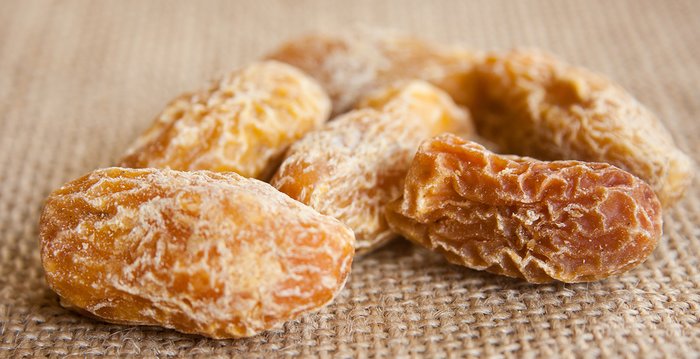
If you have a sweet tooth and don't have high blood sugar, consider quelling it with oh-so-sweet dates and you'll reap the benefits of their dietary fiber. Dates are also a notable source of potassium to help keep your blood pressure numbers in check. If you don't mind the splurge, medjool dates are the cream of the crop.
Sneak More In
For an energy-boosting, fiber-packed snack, place 1-1/2 cups pitted dates and 3/4 cup almonds in a food processor container and blend until broken down into small pieces. Add 1/3 cup unsweetened dried coconut, 1/4 cup ground flax, 1/4 cup raw cacao powder, 1/2 teaspoon cinnamon, zest of 1 orange, juice of 1/2 orange, a pinch of salt, and blend until mixture clumps together. Form into 1-inch balls.
23. Kumquats
Fiber Count: 5 Grams Per 5 Fruits
These "baby oranges" sporting an exotic name are worth scooping up from the produce aisle when you see them. At the size of a large grape, you can pop them whole into your mouth–no peeling required. In fact, they're like an orange that has been turned inside out–the edible rind is surprisingly sweet while the flesh is slightly sour. Because you eat their skin, kumquats are a top-notch fiber source.
Sneak More In
Beyond being a great out-of-hand snack, you can add chopped kumquats to yogurt, oatmeal, and salads. Or gussy up a salsa by combining chopped kumquats with diced red bell pepper, halved cherry tomatoes, sliced scallion, chopped cilantro, minced jalapeno, juice of 1/2 lime, and a couple pinches of salt.
24. Frozen Cherries
Fiber Count: 5 Grams Per 1 Cup
Few fruits scream summer like local, luscious cherries, but once they have bid adieu it's a Sisyphean effort to find anything fresh that even remotely matches up. Deliciously sweet frozen cherries are already conveniently pitted and packed with fiber, potassium, and antioxidants.
Sneak More In
You can blend frozen cherries into smoothies (duh!), but you can also make a sauce to upgrade your yogurt, cottage cheese, pancakes, or oatmeal. Bring 2 cups frozen cherries, juice of 1/2 lemon, 3 tablespoons maple syrup, 1/2 teaspoon cinnamon, and 1/4 cup water to a simmer in a medium-sized saucepan. Simmer for 10 minutes and then gently mash the cherries into a pulpy puree.
Dissolve 1-1/2 teaspoons cornstarch in 1 tablespoon water. Stir cornstarch and 1 teaspoon vanilla extract into cherry mixture and simmer 2 minutes more, or until slightly thickened.
Fiber-Packed Nuts And Seeds
25. Chia Seeds
Fiber Count: 11 Grams Per 1 Ounce
Once widely consumed by the Aztecs and then famously hawked to the tune of ch-ch-ch-chia, tiny chia seeds have experienced a renaissance of late as a bona fide superfood. Not only is chia especially plush in fiber, the seeds are an excellent source of the essential omega-3 fatty acid alpha-linolenic acid, which may have heart-health benefits. White and dark chia seeds are generally equally nutritious.
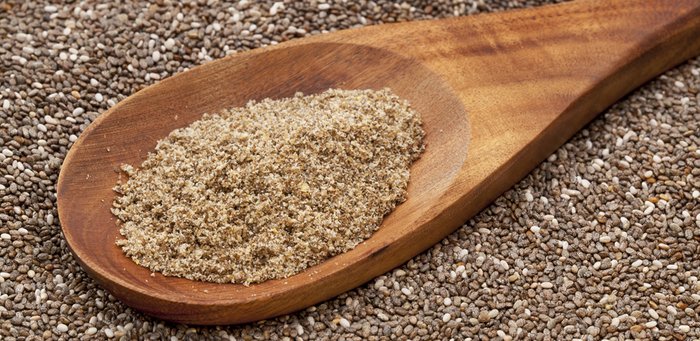
Sneak More In
It's easy to add chia seeds to items like oatmeal, yogurt, and protein shakes. When soaked in water, chia forms a gel, which is why Pinterest is full of chia seed pudding recipes. Or for a healthier fruit spread than the sugar-laced store-bought versions, try pureeing 1 cup blueberries with 1 tablespoon honey or maple syrup and 1/2 teaspoon cinnamon in a blender.
Pour into a container, stir in 1-1/2 tablespoons chia seeds and let chill for at least 3 hours to thicken. You can now even find chia powder such as Navitas Narturals on the market that can be used like flax powder.
26. Hemp Protein Powder
Fiber Count: 7-13 Grams Per 1/4 Cup
Don't get us wrong, we're still very much smitten with whey protein. But it's not going to do much to boost your fiber intake. On the flipside, hemp protein powder is made by milling ultra-healthy hemp seeds into a fine powder that's a top-notch fiber source. And since the protein in hemp contains all the essential amino acids, it's a valuable protein source for building swoon-worthy muscle.
Sneak More In
Start by mixing hemp protein powder into smoothies, but also try replacing some of the flour called for in a baked good, pancake, or waffle recipe with hemp protein powder. You can also stir a scoop into warm cereals such as oatmeal for a fiber and protein boost.
27. Coconut Flour
Fiber Count: 8 Grams Per 2 Tablespoons
Made by finely grinding up coconut solids that have had the fat removed, subtly sweet paleo-worthy coconut flour contains seriously laudable amounts of dietary fiber. Another perk is that it has a much lower glycemic index than most flours, helping you keep your body weight under control.

Sneak More In
Start by replacing about 20-30 percent of the flour called for in a recipe such as pancakes or muffins with coconut flour. But make sure to add an equivalent amount of additional liquid to the recipe to prevent the batter from becoming too thick. Coconut flour's high fiber content sops up moisture like a sponge. You can also use coconut flour as a coating for chicken or fish, and even as a replacement for breadcrumbs in meatloaf, meatballs, and burgers.
28. Ground Flaxseed
Fiber Count: 4 Grams Per 2 Tablespoons
This bastion of the health-food movement is a great source of soluble fiber. In your gut, soluble fiber attracts water and forms a gel, which slows down digestion. Not only can this keep you feeling full for longer, it also helps moderate blood sugar levels, which can have a beneficial impact on your buff-to-blubber ratio. Like chia, flax supplies omega fats and is also a source of lignans, plant compounds that may have cholesterol-lowering powers. To properly absorb the nutrients in flax the seeds must be ground into a powder.
Sneak More In
Try adding flax powder to your smoothies, pancake batters, and morning cereal. You can make your own supercharged nut butter spread by grinding together 1 cup unsalted almonds, 1 cup pecan halves, 1/4 cup ground flaxseed, and 1 tablespoon coconut oil or almond oil in a food processor or high-powered blender until creamy.
29. Dried Coconut
Fiber Count: 5 Grams Per 1 Ounce
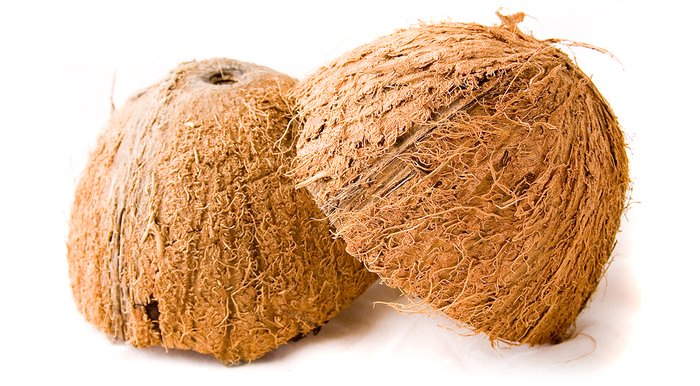
Coconut can not only make your diet taste like a tropical vacation, it's also a surprising way to boost fiber numbers. Dried coconut is produced by drying fresh coconut meat (or copra) and is available as larger coconut flakes or as a more finely shredded product. Just be sure you purchase only unsweetened coconut to avoid gut-busting added sugar.
Sneak More In
Use dried coconut to gussy up salads, salsas, granola, trail mix, and chia puddings.
30. Almonds
Fiber Count: 3 Grams Per 1 Ounce
Healthy fiber amounts are just one reason to go nuts for almonds. The crunch bunch also supplies body-friendly monounsaturated fat, magnesium, and vitamin E. Research suggests that boosting vitamin E intake may increase antioxidant activity, which can help counteract some of the oxidative stress associated with intense training.[9]
Sneak More In
Grab a handful for a midafternoon snack that won't blow up your six-pack, or make sure to use them in homemade energy foods. Chopped almonds can offer a crunchy counterpoint to salads of all types.
31. Sunflower Seeds
Fiber Count: 3 Grams Per 1 Ounce
The kernels of the sun-worshiping flower are often overlooked in favor of nuts like almonds and walnuts, but they're a great way to infuse your training diet with additional fiber at a more budget-friendly price. The shelled kernels also supply vitamin E and selenium to help further knock your daily menu into nutritional shape. A study published in the journal Diabetes Care found that the higher your selenium levels, the lower your risk for developing type 2 diabetes.[10]
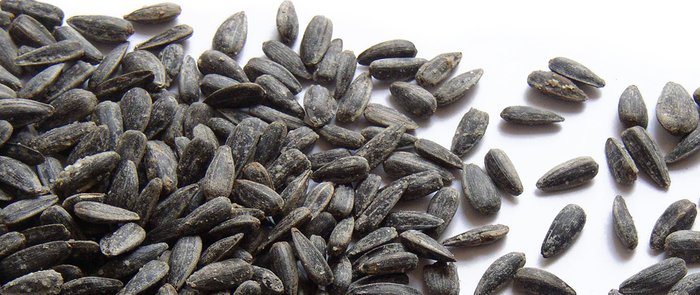
Sneak More In
Sprinkle sunflower kernels on salads, roasted vegetables, yogurt, cottage cheese, porridge, and pureed soups.
32. Pistachios
Fiber Count: 3 Grams Per 1 Ounce
The pistachio's earthy flavor telegraphs its health benefits. On top of a shot of much-needed fiber, the verdant nut delivers lutein, a carotenoid antioxidant often found in dark, leafy greens that's stored in the retina where it helps us maintain good vision. Pistachios do have a lofty calorie count, but data shows that regularly eating nutrient-dense nuts like pistachios does not lead to "Buddha belly" and instead can improve other health factors such as cholesterol numbers.[11]
Sneak More In
Use chopped pistachios to create a crunchy coating for salmon or sprinkle them over roasted sweet potatoes. Homemade energy bars and granola are other tasty places for them.
Fiber-Packed Vegetables
33. Acorn Squash
Fiber Count: 9 Grams Per 1 Cup, Cooked
Good gourd, this winter squash is a fiber powerhouse. The sweet flesh also has off-the-charts levels of beta-carotene, an antioxidant that can be converted to vitamin A in your body to improve immune health.
Sneak More In
Roasted acorn squash halves can be stuffed with all sorts of fillings including chili and quinoa (or millet!) salad. A pureed acorn squash soup is a great way to kick off a meal, or roast slices of the vegetable and then drizzle with pure maple syrup.
34. Artichoke
Fiber Count: 7 Grams Per 1 Medium Artichoke
When was the last time you cooked an artichoke? We thought so. With more fiber than almost anything else in the produce department along with plenty of vitamin C, vitamin K, and folate, it's time to start embracing this whimsical-looking veggie beyond the store-bought calorie bomb artichoke dip.
Sneak More In
Search online for tips on prepping artichoke for cooking and then try it in mac and cheese, grain salads, pizzas, and grilled cheese. Or make your own less hazardous artichoke dip using ingredients like Greek yogurt.
35. Parsnips
Fiber Count: 7 Grams Per 1 Cup
This ghostly version of Bugs Bunny's favorite veggie has a wonderful nutty, slightly sweet flavor with fragrant herbal complexity. In fact, the tubers are endowed with about 60 percent more dietary fiber than carrots. As a bonus, you get a healthy amount of potassium to help with proper muscle functioning.
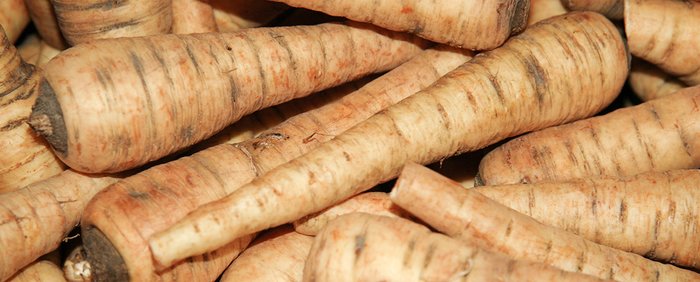
Sneak More In
Unlike carrots, parsnips almost always taste better when cooked. Try roasting them, or add chunks to soups and stews. Also try blending in some cooked parsnips with your potatoes to make a more inspiring mashed potato.
36. Broccoli Raab (Rapini)
Fiber Count: 6 Grams Per 1/2 Bunch, Cooked
Used extensively in Italian and Chinese cooking, broccoli raab has a number of small broccoli-like florets along with thin stalks and green leaves. It has a flavor similar to broccoli but a bit more pungent. In addition to fiber, one of the many health benefits of raab is that it's rich in various disease-busting phytochemicals, including indoles and sulforaphane. Look for it in an increasing number of produce departments.
Sneak More In
The flower heads, leaves, and stems can all be cooked (stir-fry, braise, steam, boil, etc.) and eaten just like regular broccoli.
37. Sweet Potato
Fiber Count: 4 Grams Per 1 Small Sweet Potato
With a lower glycemic index than the white spud, sweet potatoes have long been a go-to carbohydrate source for the physique-minded. We endorse this dietary choice wholeheartedly, as they bring good amounts of fat-fighting fiber to mealtime. Just be sure to also eat the skin since about half the fiber is found on the outer layer.

Sneak More In
Roasted, baked or pureed, it's hard to go wrong with sweet potatoes. Their sweet taste even makes them a surprisingly great addition to protein shakes. You can even slide pureed cooked sweet potato into pancake or waffle batter.
38. Peas, Frozen
Fiber Count: 4 Grams Per 1/2 Cup
Few subzero vegetables help you rough it more than green peas. Peas destined for the freezer are flash frozen soon after harvest, which helps preserve their nutritional might that includes useful amounts of vitamin K, vitamin C, and vitamin A. Heck, you even get 4 grams of protein in a serving.
Sneak More In
Try frozen peas in soups, potato salads, and pasta dishes. Or simmer 2 cups frozen peas in 1 cup broth until tender, then blend with juice of 1/2 lemon, 1/2 cup chopped parsley, and a few pinches of salt to use as a sauce for cooked fish.
39. Sun-Dried Tomatoes
Fiber Count: 3.5 Grams Per 1/2 Cup
When out of season, the flavor of the typical supermarket tomato sucks. Consider opting for more flavor-intense sun-dried tomatoes that contain more fiber than you might think. They're also a good source of lycopene, a potent antioxidant shown to help trim down blood pressure numbers.[12] If you want to cut back on your sodium intake, select oil-packed tomatoes from the deli counter over the packaged variety.
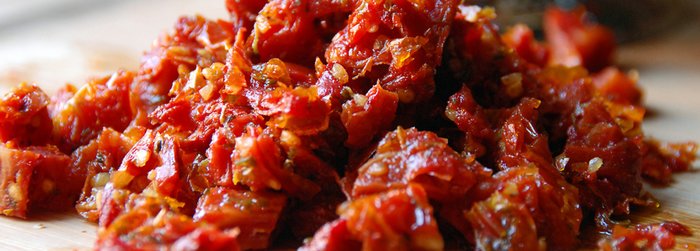
Sneak More In
Add chopped sun-dried tomatoes to scrambled eggs, burger mix, pasta dishes, and grain salads. Or for your new favorite sandwich spread, place 2/3 cup oil-packed tomatoes, 1/4 cup olive oil, 3 tablespoons water, 2 tablespoons prepared horseradish, 2 tablespoons red wine vinegar, and 1/4 teaspoon black pepper in a blender or food processor container and blend into a chunky mixture.
40. Brussels Sprouts
Fiber Count: 3 Grams Per 1 Cup
Few foods are as nutrient-dense as the wrongly maligned Brussels sprouts. Not only do they harbor fiber, but the sprouts are loaded with vitamin K and vitamin C. There's even some research to suggest that vitamin C supplementation may reduce heart rate and perception of exertion during exercise, both of which can make your taxing workouts seem less difficult.[13]
Sneak More In
The best way to prepare Brussels sprouts is to roast them, which helps transform them from earthy to more palate-pleasingly sweet. Simply slice the sprouts in half, toss with oil and salt, and roast at 400 degrees Fahrenheit until tender with some char on the outside. You can also shred raw Brussels sprouts using a food processor to use in slaws.
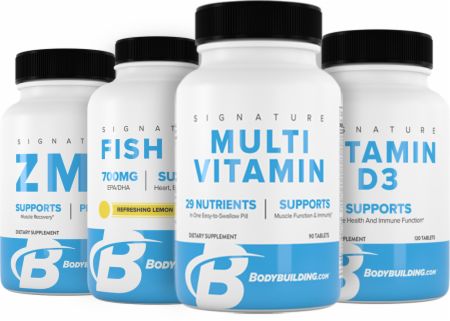
References
- Clemens, R., Kranz, S., Mobley, A. R., Nicklas, T. A., Raimondi, M. P., Rodriguez, J. C., ... & Warshaw, H. (2012). Filling America's fiber intake gap: summary of a roundtable to probe realistic solutions with a focus on grain-based foods. The Journal of Nutrition, 142(7), 1390S-1401S.
- Buil-Cosiales, P., Zazpe, I., Toledo, E., Corella, D., Salas-Salvadó, J., Diez-Espino, J., ... & Martínez-González, M. Á. (2014). Fiber intake and all-cause mortality in the Prevención con Dieta Mediterránea (PREDIMED) study.The American journal of clinical nutrition, 100(6), 1498-1507.
- Papanikolaou, Y., & Fulgoni III, V. L. (2008). Bean consumption is associated with greater nutrient intake, reduced systolic blood pressure, lower body weight, and a smaller waist circumference in adults: results from the National Health and Nutrition Examination Survey 1999-2002. Journal of the American College of Nutrition, 27(5), 569-576.
- Xun, P., Liu, K., Loria, C. M., Bujnowski, D., Shikany, J. M., Schreiner, P. J., ... & He, K. (2012). Folate intake and incidence of hypertension among American young adults: a 20-y follow-up study. The American Journal of Clinical Nutrition, 95(5), 1023-1030.
- Hairston, K. G., Vitolins, M. Z., Norris, J. M., Anderson, A. M., Hanley, A. J., & Wagenknecht, L. E. (2012). Lifestyle Factors and 5-Year Abdominal Fat Accumulation in a Minority Cohort: The IRAS Family Study.Obesity, 20(2), 421-427.
- Chandrasekara, A., & Shahidi, F. (2011). Determination of antioxidant activity in free and hydrolyzed fractions of millet grains and characterization of their phenolic profiles by HPLC-DAD-ESI-MS n. Journal of Functional Foods, 3(3), 144-158.
- Paschalis, V., Theodorou, A. A., Kyparos, A., Dipla, K., Zafeiridis, A., Panayiotou, G., ... & Nikolaidis, M. G. (2014). Low vitamin C values are linked with decreased physical performance and increased oxidative stress: reversal by vitamin C supplementation. European Journal of Nutrition, 1-9.
- Juanola-Falgarona, M., Salas-Salvadó, J., Martínez-González, M. Á., Corella, D., Estruch, R., Ros, E., ... & Bulló, M. (2014). Dietary intake of vitamin K is inversely associated with mortality risk. The Journal of Nutrition, 144(5), 743-750.
- Sacheck, J. M., & Blumberg, J. B. (2001). Role of vitamin E and oxidative stress in exercise. Nutrition, 17(10), 809-814.
- Park, K., Rimm, E. B., Siscovick, D. S., Spiegelman, D., Manson, J. E., Morris, J. S., ... & Mozaffarian, D. (2012). Toenail selenium and incidence of type 2 diabetes in US men and women. Diabetes Care, 35(7), 1544-1551.
- Burns-Whitmore, B., Hall, L., Bushnell, A., Towne, A., & Roy, S. (2014). Effects of pistachio consumption on body composition and blood lipids in healthy young women. The FASEB Journal, 28(1).
- Li, X., & Xu, J. (2013). Lycopene Supplement and Blood Pressure: An Updated Meta-Analysis of Intervention Trials. Nutrients, 5(9), 3696-3712.
- Huck, C. J., Johnston, C. S., Beezhold, B. L., & Swan, P. D. (2013). Vitamin C status and perception of effort during exercise in obese adults adhering to a calorie-reduced diet. Nutrition, 29(1), 42-45.

